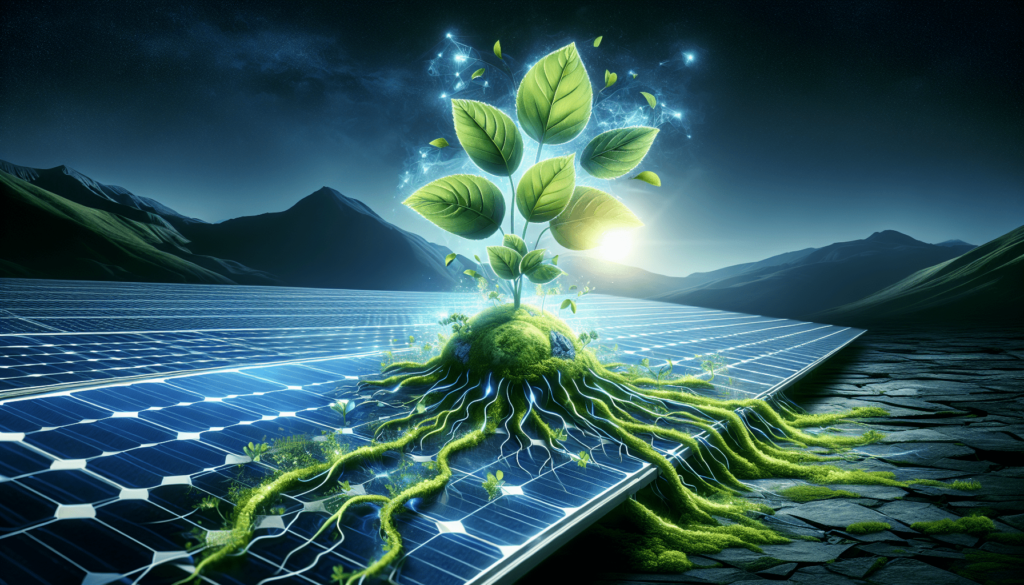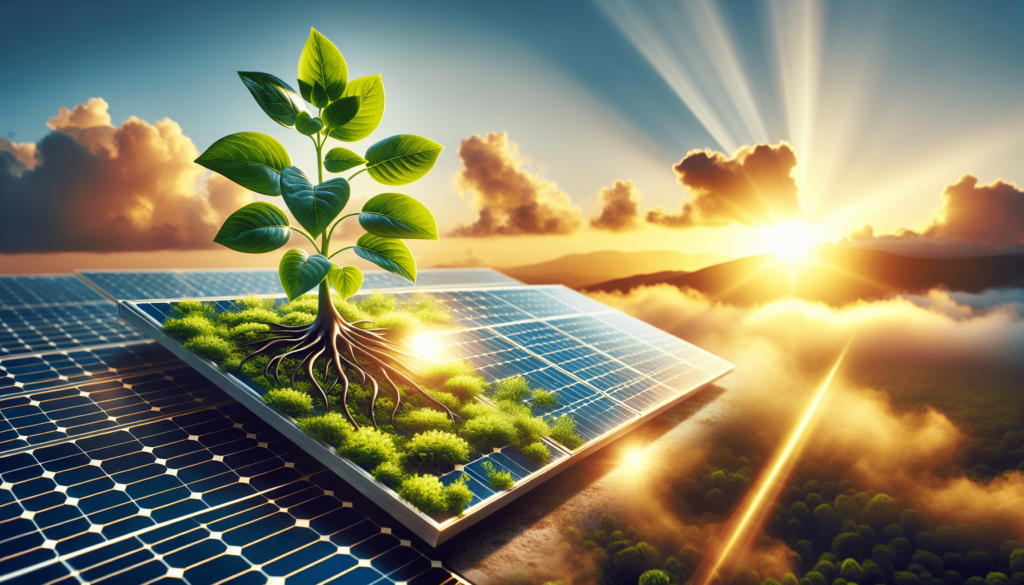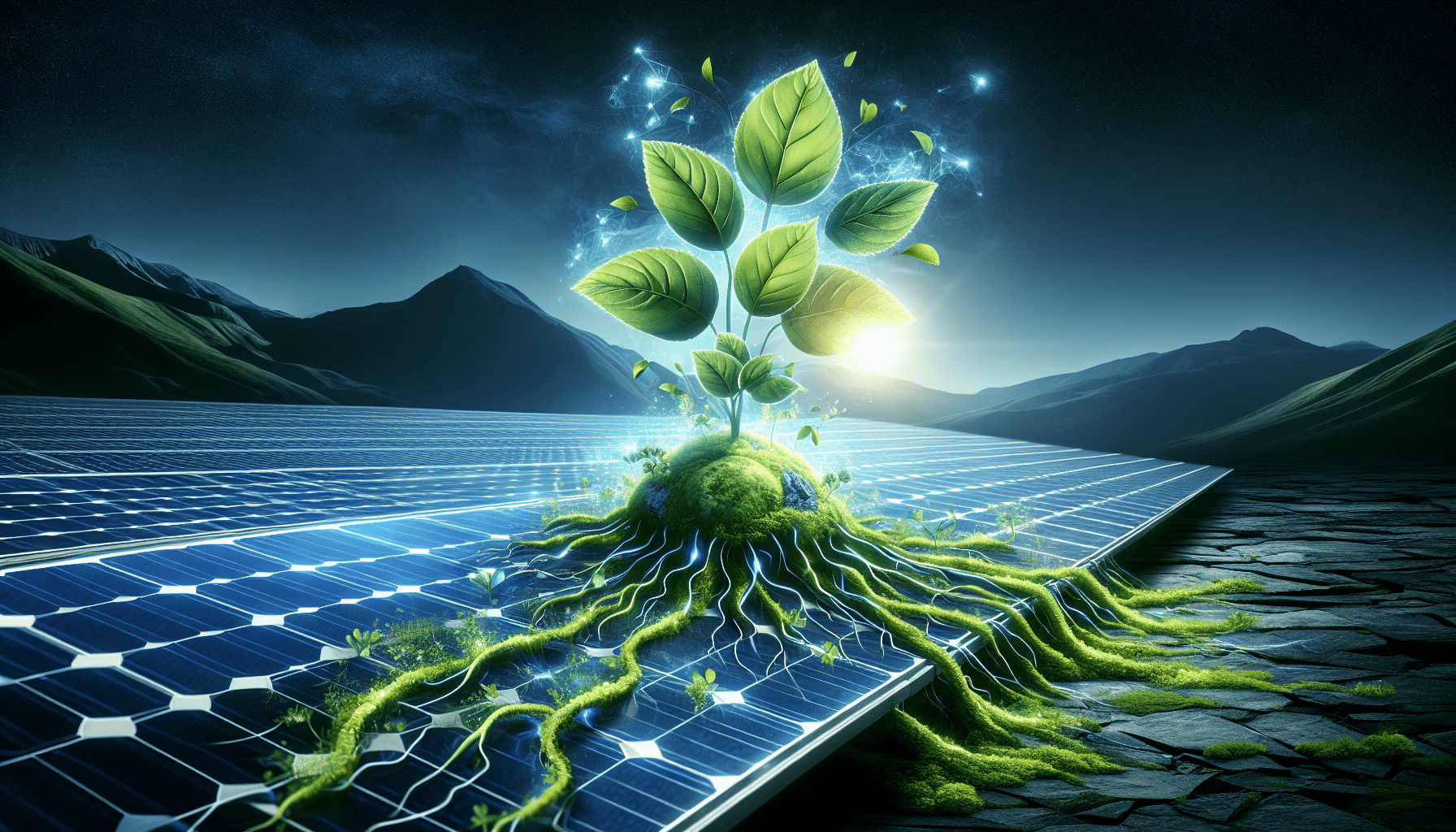Have you ever wondered about the different ways we can create and utilize sustainable energy sources? In this article, we will explore various holistic paths to sustainable energy that can benefit both the environment and society as a whole.

The Importance of Sustainable Energy
Sustainable energy is essential for combating climate change, reducing our dependence on fossil fuels, and ensuring a clean and healthy environment for future generations. By investing in sustainable energy sources, we can reduce greenhouse gas emissions, improve air quality, and create a more resilient and reliable energy system.
When it comes to sustainable energy, there are many options to consider, from renewable energy sources like solar and wind power to energy efficiency measures and sustainable transportation solutions. By exploring holistic paths to sustainable energy, we can address the complex challenges of energy production and consumption while promoting environmental stewardship and economic prosperity.
The Benefits of Sustainable Energy
Sustainable energy offers a wide range of benefits, including:
- Environmental Protection: Sustainable energy sources produce lower greenhouse gas emissions and have a minimal impact on the environment compared to fossil fuels.
- Energy Security: By diversifying our energy sources and reducing our dependence on imported fossil fuels, we can enhance our energy security and resilience.
- Public Health: Sustainable energy helps to improve air quality and reduce health risks associated with pollution and climate change.
- Economic Growth: Investing in sustainable energy creates jobs, stimulates innovation, and fosters economic growth in local communities.
- Climate Mitigation: Sustainable energy is crucial for mitigating climate change and reducing the risks of global warming and extreme weather events.
By embracing sustainable energy solutions, we can build a more sustainable and resilient energy system that meets our energy needs while safeguarding the environment and public health.
Holistic Approaches to Sustainable Energy
To achieve a more sustainable energy future, we need to adopt holistic approaches that consider the interconnectedness of various energy sources, technologies, and policies. By integrating renewable energy, energy efficiency, and sustainable practices across sectors, we can create a more balanced and sustainable energy system that benefits both people and the planet.
Renewable Energy Sources
Renewable energy sources like solar, wind, hydro, and geothermal power are key components of a sustainable energy system. These sources are abundant, clean, and renewable, making them an ideal alternative to fossil fuels for generating electricity and heat. By harnessing the power of renewable energy, we can reduce our carbon footprint, lower energy costs, and promote energy independence.
Energy Efficiency Measures
Energy efficiency is another critical component of sustainable energy. By improving the efficiency of buildings, appliances, vehicles, and industrial processes, we can reduce energy waste, lower energy bills, and decrease greenhouse gas emissions. Energy efficiency measures also help to enhance comfort, productivity, and well-being while promoting sustainability and resource conservation.
Sustainable Transportation Solutions
Sustainable transportation plays a vital role in reducing energy consumption and emissions from the transportation sector. By promoting public transit, walking, biking, carpooling, electric vehicles, and other sustainable modes of transportation, we can reduce traffic congestion, air pollution, and carbon emissions while enhancing mobility, accessibility, and affordability. Sustainable transportation solutions help to create healthier and more livable communities while promoting social equity and environmental justice.
Integrated Energy Systems
Integrated energy systems combine various energy sources, technologies, and policies to optimize energy generation, distribution, and consumption. By integrating renewable energy, energy storage, demand response, smart grids, and other innovative solutions, we can create a more flexible, reliable, and resilient energy system that meets our energy needs while minimizing environmental impact.
Circular Economy Principles
Circular economy principles emphasize resource efficiency, waste reduction, and sustainable consumption and production practices. By adopting circular economy principles, we can reduce waste, conserve resources, and promote reuse, recycling, and recovery of materials and energy. Circular economy practices help to create a more sustainable and regenerative economy that maximizes value and minimizes environmental impact.
By embracing holistic approaches to sustainable energy, we can address the complex challenges of energy production and consumption while promoting environmental sustainability, economic prosperity, and social well-being.
Sustainable Energy Technologies
A wide range of sustainable energy technologies are available to help us transition to a more sustainable energy future. From solar panels and wind turbines to energy-efficient appliances and electric vehicles, these technologies offer clean, reliable, and cost-effective solutions for meeting our energy needs while protecting the environment and public health.
Solar Power
Solar power is one of the most abundant and accessible sources of renewable energy. By harnessing sunlight to generate electricity and heat, solar power can help reduce energy costs, lower carbon emissions, and promote energy independence. Solar panels can be installed on rooftops, buildings, and open spaces to generate clean and sustainable energy for homes, businesses, and communities.
Wind Power
Wind power is another clean and renewable source of energy that can help reduce our reliance on fossil fuels. By capturing the kinetic energy of wind to generate electricity, wind turbines can provide a reliable and cost-effective source of power for homes, businesses, and utilities. Wind farms can be located onshore or offshore to take advantage of strong and consistent wind patterns.
Hydropower
Hydropower harnesses the energy of flowing water to generate electricity through dams, turbines, and other infrastructure. Hydropower is a versatile and reliable source of renewable energy that can provide clean and sustainable power for homes, industries, and communities. Hydropower plants can be built on rivers, streams, and other water bodies to generate electricity without producing greenhouse gas emissions.
Geothermal Energy
Geothermal energy taps into the heat beneath the Earth’s surface to produce electricity and heat for homes, buildings, and industries. Geothermal power plants use steam, hot water, or heat pumps to generate clean and sustainable energy by exploiting the Earth’s natural heat reservoirs. Geothermal energy is a stable, renewable, and low-emission source of energy that can help reduce energy costs and carbon emissions.
Energy Storage
Energy storage technologies like batteries, pumped hydro, compressed air, and thermal storage play a crucial role in integrating renewable energy, managing energy demand, and enhancing grid reliability. By storing excess energy from renewable sources during off-peak hours and releasing it during peak demand periods, energy storage helps to balance supply and demand, reduce energy costs, and improve grid stability.
Smart Grids
Smart grids use advanced digital technologies to optimize energy generation, distribution, and consumption in real time. By integrating renewable energy, energy storage, demand response, and other smart grid solutions, we can create a more efficient, reliable, and resilient energy system that meets our energy needs while minimizing environmental impact. Smart grids also empower consumers to make informed energy choices and participate in energy markets.
Electric Vehicles
Electric vehicles (EVs) are clean, efficient, and sustainable alternatives to traditional gasoline-powered vehicles. By using electricity to power the electric motor, EVs produce zero tailpipe emissions, reduce air pollution, and lower greenhouse gas emissions. EVs can be charged at home, at work, or at public charging stations, making them a convenient and environmentally friendly mode of transportation for individuals and businesses.
By embracing sustainable energy technologies, we can accelerate the transition to a more sustainable and renewable energy future that benefits both people and the planet.
Policy and Regulatory Frameworks
Policy and regulatory frameworks play a critical role in promoting sustainable energy, shaping energy markets, and fostering innovation and investment in clean energy technologies. By adopting supportive policies and regulations, governments, businesses, and communities can accelerate the transition to a more sustainable and resilient energy system that meets our energy needs while protecting the environment and public health.
Renewable Energy Standards and Incentives
Renewable energy standards require utilities and other energy suppliers to generate a certain percentage of their electricity from renewable sources like solar, wind, and hydropower. By setting ambitious renewable energy targets and offering financial incentives like tax credits, grants, and rebates, governments can encourage the development and deployment of renewable energy technologies and attract investment in clean energy projects.
Energy Efficiency Programs and Initiatives
Energy efficiency programs help individuals, businesses, and industries reduce energy waste, lower energy bills, and improve energy performance through energy audits, retrofits, and upgrades. By promoting energy efficiency measures and initiatives like building codes, appliance standards, and energy labeling, governments can drive market transformation, enhance energy security, and address climate change while creating jobs and economic opportunities.
Carbon Pricing and Emissions Trading
Carbon pricing mechanisms like carbon taxes and emissions trading systems incentivize businesses and industries to reduce their greenhouse gas emissions and transition to cleaner and more sustainable practices. By putting a price on carbon emissions and creating financial incentives for emission reductions, governments can internalize the social and environmental costs of carbon pollution, spur innovation, and accelerate the transition to a low-carbon economy.
Renewable Portfolio Standards and Feed-in Tariffs
Renewable portfolio standards mandate utilities to procure a certain percentage of their electricity from renewable sources, while feed-in tariffs offer guaranteed payments for renewable energy producers to inject electricity into the grid. By implementing renewable portfolio standards and feed-in tariffs, governments can promote renewable energy deployment, stimulate investment, and create a level playing field for clean energy technologies to compete in the market.
Energy Transition Plans and Roadmaps
Energy transition plans and roadmaps outline strategic visions, goals, and actions to transition to a more sustainable, low-carbon, and resilient energy system. By developing comprehensive energy transition plans and roadmaps, governments can coordinate stakeholders, set priorities, allocate resources, and track progress towards achieving a more sustainable and inclusive energy future that benefits all sectors of society.
By implementing supportive policy and regulatory frameworks, we can create an enabling environment for sustainable energy, drive market transformation, and mobilize resources and investments to accelerate the transition to a more sustainable and equitable energy system.

Community Engagement and Stakeholder Collaboration
Community engagement and stakeholder collaboration are essential for advancing sustainable energy, building consensus, and fostering social acceptance of renewable energy projects and initiatives. By engaging with communities, stakeholders, and partners, we can increase awareness, build trust, and mobilize support for sustainable energy solutions that benefit the environment, economy, and society.
Public Participation and Consultation
Public participation and consultation involve engaging community members, residents, and stakeholders in decision-making processes, project development, and policy implementation. By involving the public in discussions, consultations, and consultations, governments, businesses, and organizations can gather feedback, address concerns, and build consensus on sustainable energy initiatives that affect local communities and the public interest.
Stakeholder Engagement and Partnerships
Stakeholder engagement and partnerships bring together diverse stakeholders, including government agencies, businesses, non-governmental organizations, academia, and communities, to collaborate on sustainable energy projects and programs. By fostering partnerships, sharing resources, and leveraging expertise, stakeholders can work together to identify challenges, explore opportunities, and develop solutions that promote sustainable energy and advance common goals and objectives.
Education and Awareness Campaigns
Education and awareness campaigns raise awareness, build knowledge, and foster understanding of sustainable energy technologies, practices, and benefits among the general public, students, professionals, and decision-makers. By conducting outreach, education, and communication activities, organizations and institutions can empower individuals, organizations, and communities to make informed choices, take action, and advocate for sustainable energy solutions that support environmental sustainability and social well-being.
Capacity Building and Training Programs
Capacity building and training programs provide individuals, organizations, and communities with the knowledge, skills, and tools to develop, implement, and manage sustainable energy projects and initiatives. By offering capacity building, training, and technical assistance, governments, institutions, and organizations can build local expertise, enhance institutional capacity, and support the adoption of sustainable energy technologies and practices that promote energy security, economic development, and environmental protection.
Multisectoral Collaboration and Dialogue
Multisectoral collaboration and dialogue bring together stakeholders from different sectors, disciplines, and perspectives to exchange ideas, share experiences, and identify innovative solutions to complex energy challenges. By fostering dialogue, collaboration, and cooperation among diverse actors, organizations, and institutions, we can build synergies, leverage resources, and promote interdisciplinary approaches to sustainable energy that address the interconnected social, economic, and environmental dimensions of energy production and consumption.
By engaging with communities, fostering stakeholder collaboration, and promoting public participation, we can build support, mobilize resources, and drive momentum for sustainable energy solutions that benefit the environment, economy, and society.
Conclusion
In conclusion, exploring holistic paths to sustainable energy is essential for addressing the complex challenges of energy production and consumption, mitigating climate change, and promoting environmental sustainability, economic prosperity, and social well-being. By embracing renewable energy, energy efficiency, sustainable transportation, integrated energy systems, circular economy practices, and other holistic approaches, we can accelerate the transition to a more sustainable, resilient, and inclusive energy system that meets our energy needs while safeguarding the environment and public health.
To achieve a more sustainable energy future, we need to adopt supportive policies and regulatory frameworks, engage with communities and stakeholders, promote public participation and consultation, and build partnerships and collaborations that foster innovation, investment, and consensus on sustainable energy solutions. By working together, sharing knowledge, and mobilizing resources and investments, we can create a more sustainable and equitable energy system that benefits all sectors of society and ensures a clean and healthy environment for future generations.
Together, we can explore holistic paths to sustainable energy and build a more sustainable and resilient energy future for ourselves, our communities, and our planet. Let’s take action, make a difference, and shape a better future for all.

